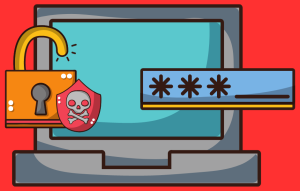The Reschini Group Adds Todd D. Brice as Vice President
Joe Reschini, President
The Reschini Group
(724) 463-5973
The Reschini Group Adds Todd D. Brice as Vice President
The Reschini Group will welcome Todd D. Brice as Vice President, Business Development, on December
1, 2023.
Brice, who was most recently President & CEO of Indiana-based S&T Bank, has extensive experience in
many facets of the financial services industry.
Brice has remained an active member of the community and is currently a board member for the Indiana
County Development Corporation, Seton Hill University and Pennsylvania Mountain Care Network.
“Everyone at Reschini is thrilled that Todd will be joining our team. Todd’s reputation, network, and
commitment to the community are unmatched,” said Joe Reschini, President of The Reschini Group.
Brice shares the sentiment. “I am very excited to join the Reschini Group and look forward to working
with their team,” he said.
Brice earned a Bachelor of Arts degree in Business Administration from Grove City College in Grove City,
PA and completed a three-year program through the Graduate School of Banking at the University of
Wisconsin in Madison, WI. He previously served on the boards of the Pittsburgh branch of the Federal
Reserve Bank of Cleveland, Indiana County YMCA, and Indiana Regional Medical Center. Brice is also a
member of the Pittsburgh Gold Chapter of the Young President’s Organization and a former member of
the Greater Pittsburgh Chamber of Commerce.
Holiday Electrical Safety Tips
The U.S. experiences more than 25,000 home electrical fires each year, most of which could have been easily prevented if the right safety precautions had been taken. With the holiday season now in full swing, the proper use of electrical devices like decorations, tree lights, and other objects not typically used during the rest of the year takes on even greater importance. Here are some tips to keep your home, family, and guests safe during the holidays:
1. Don’t Overload Outlets
Extension cords should not be a permanent solution to any situation in your home. Each outlet's circuit is designed to handle a specific amount of electricity, and overloading them with extension cords and too many power strips can cause dangerous overloads.. This is one of the most common reasons for electrical fires, and it’s entirely preventable. Make sure your surge protectors have an internal circuit breaker that will cut power if it senses problems. If your family simply has too many gadgets that need plugging in at once, it’s probably time to install new outlets and wiring.
2. Test Stored Decorations, Displays, and Lights Before Using
It can be easy to assume that all holiday supplies remain in proper working order year after year, but that can be a dangerous assumption. Carefully test all decorations, displays, and lights that require electricity before you place them into use. If you have any questions or concerns about the functionality and safety of any piece, ensure it is replaced.
3. Keep Flammable Objects Away from Electrical Outlets and Cords
Avoid placing trees, furniture, curtains, decorations, boxes or any other flammable item in front of (or too close to) an outlet. Most outlets generate an unnoticeable amount of heat, but if they’re overloaded or faulty in some other way, they could generate a lot more heat, cause sparks and then start a fire on whatever is closest to them. Regularly check your outlets by feeling them; they should not be noticeably warm.
4. Unplug Decorations When Not in Use
It remains a smart habit to unplug things like the toaster and other small kitchen appliances before you leave the house. Never leave a space heater or electric blanket plugged in when you’re not there. The same goes for holiday decorations that require electricity. Better safe than sorry.
5. Retire Older Decorations
Even though some older holiday decorations carry sentimental value, they could still become hazardous electrical-fire starters. If any of these items shows the following signs of wear, dispose of them safely and get a newer, safer model: frayed electrical cords; lights flicker when turning on or off; sparks when turning on; or excessive heat coming from the item.
The holidays are a time for family, friends, and celebration. Electrical safety is simple and essential, to permit every gathering the assurance and comfort of knowing all is well. Consult with the professionals at The Reschini Group for more information on this subject.
Copyright 2023 The Reschini Group
The Reschini Group provides these updates for information only, and does not provide legal advice. To make decisions regarding insurance matters, please consult directly with a licensed insurance professional or firm.
Taking the Wheel: Self-Driving Cars and Insurance Coverage
With every new model year, cars sport more automated features and crash avoidance technology, like blind-spot monitoring, rear traffic sensors, and forward-collision and lane-departure warnings. Each of these will, of course, be built into the fully self-driving vehicles sure to come in the next few years.
As such crash avoidance technology gradually becomes standard equipment, insurers will be able to better determine how well these components reduce the frequency and cost of accidents. For accidents that do still occur, these tech components also can help confirm whether a higher percentage of product liability claims result, as claimants blame the manufacturer or suppliers for what went wrong rather than their own behavior. Liability laws might evolve to ensure that autonomous vehicle technology advances are not brought to a halt, due to the potential financial risk.
While experts differ as to how quickly the evolution to autonomous vehicles will take, most drivers can expect the steady progression from a minimally or semi-automated car to the next level to continue year after year. According to the Insurance Institute for Highway Safety, it is anticipated that there will be 3.5 million self-driving vehicles on U.S. roads by 2025, and 4.5 million by 2030. However, the institute cautioned that these vehicles would not be fully autonomous, but would operate autonomously under certain conditions.
An industry survey of more than 200 experts in the field of autonomous vehicles found three primary obstacles ahead: legal liability, elected and regulatory policymakers, and consumer acceptance. An Insurance Information Institute Pulse survey reported that 55 percent of consumers would not ride in a fully autonomous vehicle. Some do not want control to be taken from them and would resist the move to complete automation, even stating they avoid using the cruise control feature for that very reason.
Some aspects of insurance will be impacted as autonomous cars become the norm. There will still be a need for liability coverage, but over time the coverage could change, as manufacturers and suppliers and possibly even municipalities are called upon to take responsibility for what went wrong.
One thing remains certain, however. Technology promises to continue on its march forward, and self-driving cars – or, at least, more features that enhance safety – are sure to become a more prevalent feature of the automotive landscape. To keep up with these changes, and the impact it could have on your auto insurance coverage, contact the professionals at The Reschini Group.
Source: https://www.iii.org/article/background-on-self-driving-cars-and-insurance
Copyright 2023 The Reschini Group
The Reschini Group provides these updates for information only, and does not provide legal advice. To make decisions regarding insurance matters, please consult directly with a licensed insurance professional or firm.
Road Tech at Work: Telematics Benefit Drivers, Employers, and Insurers
For decades, auto insurance rates have been based on estimates and histories. Teen drivers, considered the riskiest, have paid the highest premiums, while married drivers have paid lower premiums based on an expectation of safer performance behind the wheel.
But technology has begun to paint a much clearer, more accurate picture of driver behavior, along with better information on conditions impacting that behavior, like road conditions, night versus day driving, areas through which a vehicle travels, the vehicle’s overall roadworthiness, and other factors. All of this data combine to assign premium rates that more closely reflect the actual risk involved. As a result, everyone affected by auto insurance rates stands to benefit from this growing influence of telematics.
Benefits to motorists include:
Lower premiums – As risk factors are more accurately measured, based on driving behavior and location, rather than lifestyle, home address, and credit score.
Driver feedback – Reports and feedback from data generated can help drivers improve performance.
Connected cars – A vehicle with a telematics system may be connected to automatic emergency notification, a vehicle locator, and remote unlocking.
Theft protection – Telematics systems can track a stolen vehicle, prevent it from starting after the ignition has been turned off, or even reduce its speed during a police chase.
Transparent claim process – Accident data will help insurers identify who is at fault, making the claim process transparent.
Benefits to employers with vehicle fleets include:
Vehicle tracking – Fleet operators can better estimate the time of delivery accurately. Law enforcement can also use vehicle tracking to locate and retrieve a vehicle in case of theft.
Remote diagnostics – Telematics systems can inform fleet operators about maintenance requirements before a breakdown, thereby reducing costly downtime.
Driver feedback – Operators can track driver behavior and provide real-time feedback, preventing accidents, improving fuel efficiency, and enabling customized training to improve driver performance.
Fuel savings – Fleet operators can identify and retrain aggressive drivers, choose more fuel-efficient routes, or improve vehicle performance.
Network Optimization – Data collected can help fleet operators remove idle time in the system and reduce overheads.
Benefits to auto insurers include:
Accurate risk assessment – Insurance companies can calculate direct risks associated with driving styles.
Fight insurance fraud – Telematics can recreate the play-by-play actions of the events leading to accidents, and accurately ascertain who was at fault.
Reduce claim costs – Driver feedback and discount incentives for good driver behavior can result in a general improvement in driving habits that can lead to reduced claims.
Technology like telematics can make roads safer, performance more profitable, and insurance rates more accurate – and this technology is still in its early stages. To learn more about the advantages of telematics for your organization’s auto insurance coverage, contact the professionals at The Reschini Group.
Source: https://www.carinsurance.org/telematics-and-car-insurance/
Copyright 2023 The Reschini Group
The Reschini Group provides these updates for information only, and does not provide legal advice. To make decisions regarding insurance matters, please consult directly with a licensed insurance professional or firm.
Year-End Means Crucial Time for HR Teams
As the fourth quarter approaches, a natural inclination may be to close out the year and look forward to the calming influence of the holidays at year-end – but not if your responsibility incudes Human Resources work, as the year-end period serves instead to create numerous areas of special focus and critical analysis.
The last months of the year are a great time for HR professionals to ensure they’re prepared for everything that needs to be done. It’s also an opportunity to evaluate which HR processes organizations want to take forward into the new year and which to leave behind. While certain HR compliance activities must be completed by the end of the year, HR professionals can also use this time of preparation to focus on tasks that will set their organizations on the right course for next year, such as:
Completing annual performance reviews
Asking employees to update their personal and contact information
Backing up HR data and personnel files
Establishing an annual budget and allocating resources
Reviewing recruiting and hiring processes
Creating plans for new hires
Measuring:
Employee engagement and satisfaction
Employee productivity
Turnover rate, including new hire turnover
HR growth compared to revenue
Average time to fill open positions
Offer acceptance rate
Promotion rate
Time to hire
HR-to-employee ratio
Checking on compliance with:
Employee classification
Personnel files
Employee handbook
Employment policies
Employment and labor law posters
Year-end activities can seem limitless, which may leave HR professionals feeling overwhelmed, and some tasks can be easily overlooked. By preparing early, HR can wrap up the year properly and set their organizations up for success next year.
For more information and guidance on successful year-end policies and practices, contact the Benefits professionals at The Reschini Group.
Copyright 2023 The Reschini Group
The Reschini Group provides these updates for information only, and does not provide legal advice. To make decisions regarding insurance matters, please consult directly with a licensed insurance professional or firm.
Death, Taxes…and Identity Theft?
If our modern society has any assurances at all, the ever-increasing rate of identity theft can certainly be counted among them. That fact makes insuring for what may feel like – but that does not need to be – an inevitability all the more prudent.
Here are some statistical highlights to underscore this:
The Identity Theft Research Center (ITRC) states in its Annual Data Breach Report that the U.S. saw the second-highest number of data compromises ever in 2022, impacting 422 million individuals.
The Federal Bureau of Investigation’s 2022 Internet Crime Report says a record 800,994 complaints of cybercrime were reported by the public that year, a 5 percent reduction from the year before, but with losses increasing to $10.2 billion, a significant jump from the 2021 total losses of $6.9 billion.
The Federal Trade Commission reported that it took in more than 5.1 million reports in 2022, about half concerning fraud and about a quarter concerning identity theft. Of the identity theft cases, credit cards, online shopping, email and social media represented the leading avenues for this cybercrime.
The insurance industry fell victim to the most ransomware attacks in the first half of 2021, with telecommunications coming in second.
In 2020, nearly half of all Americans (47 percent) experienced financial identity theft, according to industry sources.
The threat is real. The costs are substantial. And prevention is possible. Cybersecurity insurance may not act to stop identity theft entirely, but it can protect your financial interests and make recovery more manageable.
Contact the professionals at The Reschini Group for more information and guidance on securing the proper type and level of cybersecurity protection for your enterprise.
Source: https://www.iii.org/fact-statistic/facts-statistics-identity-theft-and-cybercrime
Copyright 2023 The Reschini Group
The Reschini Group provides these updates for information only, and does not provide legal advice. To make decisions regarding insurance matters, please consult directly with a licensed insurance professional or firm.
Time Is Money: The Importance of Prompt Claims Reporting
You snooze, you lose. The cautionary tone of that idiomatic phrase applies with special power when it comes to filing an insurance claim.
When an event occurs that results in the need to file a claim for recovery of property, loss of income, or any other form of damage, the longer it takes to collect the required documentation, the more complicated an eventual settlement can become. It only makes sense – why not get all the facts together, in written form, substantiated with additional verifiable forms of evidence, as quickly as possible, while the information remains fresh and more easily documented?
Trying to recollect and reconstruct the details of an accident, theft, fire, water damage, and so forth, may leave out key facts, lost to faulty memory or lack of visual proof long after the fact. And when such seeds of doubt or omission get planted, recovering the full value of what had been lost faces hurdles – obstacles that could have been easily avoided.
In preparing to file a claim, first check with your insurance carrier to make sure you understand all of the documentation and other standards of proof that may be required. Collecting the full complement of documentation is absolutely vital in helping the claim get processed and paid as seamlessly as possible – and the faster it’s submitted, the better.
They say speed kills? Not in this scenario. Here, delays can cause all the problems. The very fact that you need to file a claim means you have already suffered a loss. The recovery from that loss should not become another source of hardship, delay, or frustration. Get your information together, make sure your insurer is on board and guiding you through the process, and get back on your feet promptly.
Contact the professionals at The Reschini Group for more information and direction on this subject.
Copyright 2023 The Reschini Group
The Reschini Group provides these updates for information only, and does not provide legal advice. To make decisions regarding insurance matters, please consult directly with a licensed insurance professional or firm.
The Unusual Aspects of Hiring Seasonal Employees
They only come around once, maybe twice, a year, depending on what type of business we’re talking about. But even though they may only be around for a month or two at a time, seasonal employees remain a vital part of operations overall – and the unique aspects of recruiting, training, and retaining them hold a special place in a business’ plans.
Seasonal employees can have high recruiting costs since employers need to recruit them each year, and many seasonal employees do not return once their employment ends. Organizations also generally have less time to train seasonal workers because of their relatively short employment period. As such, these worker may receive inferior training or no training at all, to reduce costs and save time. A lack of training could nullify any cost-savings, though.
Various federal, state, and local employment laws and regulations apply to seasonal workers. For example, covered employers must comply with federal anti-discrimination statutes and wage and hour laws—including minimum wage, overtime, recordkeeping and youth wage program requirements—for their seasonal workers. In addition, state laws or local requirements may apply, such as unemployment insurance, severance pay, sick or other leave, personnel records, mandatory training, and predictive scheduling.
Seasonal workers need to be effectively onboarded to perform their responsibilities well, similar to regular employees. By dedicating sufficient time and resources to onboarding and training seasonal workers, organizations can set these employees up for success. To address potential productivity issues with seasonal employees, employers can train supervisors and managers to work with and manage them effectively.
While hiring seasonal employees can help with surges in business activity, employers should think long-term. About half of all seasonal hires are interested in full-time positions, according to research from online employment platform Snagajob. Hiring employees on a temporary basis can be a good opportunity to determine if they are suited for long-term employment. Additionally, organizations can discover which seasonal employees may want a long-term commitment or are interested in returning next year.
It all depends on how the employer looks at the situation. Are you plugging a short-term gap or setting your enterprise up for a long-term beneficial relationship? The requirements and regulations will never go away, but your seasonal employees can and will – unless you give them a reason to want to return, whether for another temporary assignment or as a permanent part of your team moving forward.
Contact the Benefits professionals at The Reschini Group to learn more about the special strategies that apply to seasonal employees.
Copyright 2023 The Reschini Group
The Reschini Group provides these updates for information only, and does not provide legal advice. To make decisions regarding insurance matters, please consult directly with a licensed insurance professional or firm.
Seven Steps to Improved Cybersecurity
Cyberattacks and the resulting data breaches represent significant risks, both financial and reputational, to businesses, with insurance industry estimates stating that the $3 trillion price tag currently could balloon to $5 trillion in 2024. Those figures include lost income and the payment of data breach-related regulatory fines.
According to the Insurance Information Institute*, cost-effective options exist to avoid falling victim to cyberattacks, such as:
Understand your cyber risks. Businesses are vulnerable to cyberattacks through hacking, phishing, malware, and other methods.
Train your staff. Those engaged in cyberattacks find a point of entry into a business’ systems and network. A business’ exposure can be reduced by having and enforcing a computer password policy for its employees.
Keep software updated. Businesses should routinely check and upgrade the major software they use.
Create back-up files and store them off-site. A business’ files should be backed up either to an external hard drive or on a separate cloud account. Taking these steps are vital to data recovery and the prevention of ransomware.
Maintain firewall and antivirus technology. A business should evaluate the security settings on its software, browser and email programs.
Establish a Data Breach Plan. A business should remind its employees to review periodically the data breach detection tools installed onto their computers. If a data breach occurs, employees must notify the business immediately to prevent further loss.
Secure insurance coverage to address cyber risks. Cyber insurance coverage typically provides protection for costs associated with data breaches and ransomware.
The threat of cyberattack never goes away, so neither should your defenses against it. Contact the professionals at The Reschini Group to learn more and take the appropriate steps to protect your business interests
Copyright 2023 The Reschini Group
The Reschini Group provides these updates for information only, and does not provide legal advice. To make decisions regarding insurance matters, please consult directly with a licensed insurance professional or firm.
The Reschini Group Voted Gold by Readers
The Reschini Group was voted the Gold award in the Indiana Gazette’s Reader’s Choice awards in the category of Best Insurance Agency.
Understanding Business Interruption Insurance Coverage

“Here today, gone tomorrow.” An old familiar phrase, but never a welcome one when it pertains to a business. But should the worst happen, an option to keep your business on its feet is readily available.
Business interruption insurance helps businesses protect against monetary losses due to periods of suspended operations when a covered event, such as a fire, occurs and causes physical property damage. The coverage allows businesses to pay fixed expenses, including costs incurred while operating at an offsite location, while the property is closed for repairs and restoration. Policies also reimburse owners for lost revenue that would have otherwise been earned if the business remained open.
Business interruption coverages are typically bundled within a businessowner’s policy (BOP), a commercial package that includes business property and liability coverages or a standalone Commercial Property policy. Most insurers offer this coverage feature for accounts that they are willing to insure.
According to the Federal Emergency Management Agency (FEMA), about 25% of businesses fail to reopen after a disaster strikes, making business interruption coverage even more critical for the long-term survival of an enterprise. While commercial property insurance pays for actual physical damages or losses, a business interruption policy covers lost net income due to the closure of the business while repairs are underway, as well as offering coverage for rent or lease payments, relocation costs, employee wages, taxes, and loan payments. Exclusions from coverage include losses unrelated to property damage, such as lost revenues due to viral outbreaks or pandemics.
Business interruption policies may contain a clause for civil authority coverage, as well, meaning that if a state, local, or federal government entity prohibits access to the business premises, thereby forcing the business to temporarily close, this clause in the business interruption insurance may cover lost income.
Should a calamity strike, you certainly want to be able to say about your business, “Here today, still here tomorrow.” Business interruption coverage holds the key. Contact the professionals at The Reschini Group to learn more and determine the right plan for your business.
https://content.naic.org/cipr-topics/business-interruptionbusinessowners-policies-bop
Copyright 2023 The Reschini Group
The Reschini Group provides these updates for information only, and does not provide legal advice. To make decisions regarding insurance matters, please consult directly with a licensed insurance professional or firm.
Which Consumer-Driven Health Plan Is Right for Your Business?
Consumer-driven health plans like health savings accounts (HSAs), flexible spending accounts (FSAs), and health reimbursement arrangements (HRAs), can help soften the blow of continually rising health care costs, but it’s important to understand what each option requires and provides. Here are brief descriptions of the similarities and differences concerning HSAs, FSAs and HRAs:
HSAs
Due to their tax-favored status, HSAs require individuals to meet these qualifications:
Be covered by a high deductible health plan (HDHP)
Not have any other health coverage (with some exceptions)
Not be claimed as a dependent on another person’s tax return
Not be covered by Medicare
The employer and employee can contribute to the HSA in the same year, subject to annual limits. Employers may allow employees to make pre-tax salary reduction contributions to fund their HSAs. Individuals may roll over unspent funds in the HSA from year to year. Since the HSA is a tax-exempt account owned by the employee, he or she may keep the account upon termination of employment or retirement.
FSAs
Health FSAs provide a means for employees to reduce their income tax liability through salary reduction. The Affordable Care Act (ACA) limits employee’s pre-tax contributions to their health FSAs to $3,050 (adjusted for inflation for future plan years). Since only employees can participate in a health FSA, self-employed individuals can establish health FSAs for their employees, but cannot set up their own accounts. Also a “use-it-or-lose-it” provision, meaning that employees must use every dollar in the account by the end of each year, which can lead to overfunding the account and then spending unnecessarily at the end of the year to avoid forfeiting the money. Some options for protecting those unused funds exist, but it is best to check with a qualified benefits expert first.
HRAs
HRAs allow employees to use employer contributions to pay for (or reimburse) eligible medical care expenses. HRAs can only be funded with employer money, and unused HRA balances may accumulate from year to year. There is no specified cap on the amount an employer is allowed to contribute to an HRA. Also, an HRA is not subject to the uniform coverage rule that applies to health FSAs. Like health FSAs, only employees can participate in an HRA, which means that self-employed individuals cannot participate in an HRA on a tax-favored basis.
Introducing consumerism into your health plan requires an evaluation of the benefits and disadvantages of HSAs, FSAs and HRAs. No single solution is right for every employer. If your organization is considering implementing a consumer-driven health plan, the Benefits team at The Reschini Group can help determine the best plan for you.
Copyright 2023 The Reschini Group
The Reschini Group provides these updates for information only, and does not provide legal advice. To make decisions regarding insurance matters, please consult directly with a licensed insurance professional or firm.
Reschini Adds Two Vice Presidents
The Reschini Group added two senior staff members: Sarah Ramer, Vice President of Human Resources and Doug Sweeney, Vice President & Account Executive. Ms. Ramer will work from the Reschini home office in Indiana, Pa., while Mr. Sweeney will work from the Pittsburgh Office.
“Talent acquisition and management is critical to continue to build our business and support our customers. Sarah brings a wealth of experience to help us build and retain the best team possible,” said Joe Reschini, President of The Reschini Group. “Doug’s depth of knowledge of complex insurance structuring and financing will help us continue to expand our customer base by providing the property/casualty coverage and consultation our customers need.”
Ramer has extensive experience in the financial services industry with a focus on talent acquisition, employee relations, performance management, and design and administration of compensation. A board member of the Indiana County Area Society for Human Resources Management, she is a Certified Professional through the Society for Human Resources Management (SHRM-CP). She is active in Indiana County Young Life and Summit Church.
Sweeney works with organizations of all sizes, both commercial and municipal, to plan and place property/casualty programs. Well versed in the financing structures of insurance as well as assessing potential exposures, he helps his customers minimize risk while understanding their best options for funding. He has worked with large insurance carriers and has experience in underwriting and managing programs. Sweeney earned a Bachelor of Science degree in Insurance/Risk Management from the Pennsylvania State University and a Master of Business Administration with an emphasis in Information Systems Management from Duquesne University.
Insurers Are Partners in Mitigating Cyber Risk

Cybersecurity risks continue to expand nearly unabated. While it can feel like trying to hold back a tidal wave with a bath towel sometimes, effective tools do exist and can be easily accessed.
What must always be remembered is that a commitment to resilience and pre-emptive mitigation remains imperative. Insurers are well-positioned to serve not only as financial first responders but as partners in managing these evolving hazards, along with their business associates and partners.
According to the Insurance Information Institute, “The first line of defense is creating a robust cybersecurity system, training employees on how to identify a potential attack, encrypting company data, and enabling antivirus protection. With only half of businesses reporting a consistent encryption strategy, and the cost of data breaches continuing to rise, organizations must do more to protect themselves and their customers.”.
Some commonly seen cyber liability risks include:
- Liability—You may be liable for costs incurred by customers and other third parties as a result of a cyber attack or other IT-related incident.
- System recovery—Repairing or replacing computer systems or lost data can result in significant costs.
- Notification expenses—In several states, if your business stores customer data, you’re required to notify customers if a data breach has occurred or is even just suspected.
- Regulatory fines—Several federal and state regulations require businesses and organizations to protect consumer data.
- Class action lawsuits—Large-scale data breaches have led to class action lawsuits filed on behalf of customers whose data and privacy were compromised.
To extend cyber liability insurance coverage requires the purchase a stand-alone cyber liability policy, customized for your business to cover several types of risk, including:
- Loss or corruption of data.
- Business interruption.
- Multiple types of liability.
- Identity theft.
- Cyber extortion.
- Reputation recovery.
Contact the professionals at The Reschini Group for more information and guidance on obtaining the proper level of cyber liability insurance coverage for your situation.
Copyright 2023 The Reschini Group
The Reschini Group provides these updates for information only, and does not provide legal advice. To make decisions regarding insurance matters, please consult directly with a licensed insurance professional or firm.
The Protection of Coinsurance

Securing appropriate insurance for your business and property can be enough of a process on its own. So what does the concept of coinsurance represent? Nothing less than protection for both the insured and the insurance provider.
Let’s start with defining our terms. Coinsurance is a property coverage provision set by your insurer that requires you to carry coverage for a certain percent of your property's value. That way, your insurer can be sure you have adequate coverage if you need to make a claim, and it can ensure that its resources are adequate to cover that claim.
In a typical commercial property insurance policy, a coinsurance clause ensures that you carry adequate coverage to protect your assets. For instance, for an office building valued at $200,000, you would need at least $200,000 in property insurance coverage. If your policy has a clause with a coinsurance percentage of at least 80%, that means you must insure the building for at least $160,000. If you purchase less coverage, the insurance company may not pay out the full value of your damages, even if they fall within the limits of your policy.
Say you file a claim after a fire causes $100,000 worth of property damage. Your property insurance policy has a limit of $150,000 and a $5,000 deductible. Per your coinsurance clause, you were required to purchase at least $160,000 in coverage. Because you failed to meet your coinsurance percentage of 80%, you will face additional costs as determined by the ratio of the amount you carried divided by the amount that was required: $150,000 / $160,000 = 0.937. So if your loss was $100,000, your insurer will pay $93,700 minus your $5,000 deductible. Your total costs will end up being $11,300.
Not every insurance company includes a coinsurance clause in its policies. However, those that do require coinsurance typically have three reasons for doing so:
- To ensure clients have adequate coverage.
- To protect their pool of resources to better handle real-world claim situations.
- To encourage accurate assessment and underwriting.
The bottom line? When you’re required to meet coinsurance limits and do so, you’re more likely to make an accurate assessment of the value of your assets, which protects the insurance provider and you in the long term. Contact the professionals at The Reschini Group for more information on coinsurance and how it can apply to your business coverage.
Copyright 2023 The Reschini Group
The Reschini Group provides these updates for information only, and does not provide legal advice. To make decisions regarding insurance matters, please consult directly with a licensed insurance professional or firm.
Don't Rely on Luck to Get Through the Next Health Crisis

Some people live by the credo, “I’d rather be lucky than good.” But as the Covid-19 pandemic taught us, it’s foolish to rely on luck alone to manage your business through a major health crisis. Complete and comprehensive preparation must take precedence.
Covid became a true turning point for many workplaces. The Human Resources function now is expected to understand public health challenges swiftly and manage them efficiently. So, how to prepare? Here are four steps to success:
- Assess the Risk to the Organization
Employers must remain updated on federal and local health guidance to help inform organizational strategies, while also considering questions like: Are employees at a heightened risk by being in the workplace during this crisis? What safety protocols will keep employees safe? - Adapt Quickly
Based on the risk assessment, employers must be prepared to adapt quickly, ensuring that safeguards in place don’t force employees to choose between their jobs and their health. - Communicate Thoroughly
At every stage, employers should keep employees in the loop. This means sharing the outcome of the risk assessment and clearly communicating any new workplace protocols. Employees should never have to wonder how their workplace is handling a crisis. - Embrace Change
During the early months of the pandemic, it took far too long for some businesses to adapt. Employers should be ready to make these decisions swiftly, and must embrace the changing landscape. This might mean having some employees work remotely while others remain in the workplace. Employers should think about such contingencies and be prepared to follow through if a public health crisis necessitates it.
Responding to the next health crisis will be much easier when you have planned and prepared ahead of time. Don’t leave it to luck. There’s too much at stake. Reach out to the Benefits team at The Reschini Group for more workplace guidance.
Copyright 2023 The Reschini Group
The Reschini Group provides these updates for information only, and does not provide legal advice. To make decisions regarding insurance matters, please consult directly with a licensed insurance professional or firm.
Surge in Cyber Attacks Accelerates Need to Secure Coverage

A sharp rise in the number and size of ransomware losses over the past three years is changing the availability and cost of cybersecurity insurance coverage, according to the Insurance Leadership Forum. Annual cyber liability rates have increased more than 40% in recent years, in fact.
Insurance providers are carefully managing the growing risk, with some scaling back coverage options for business customers and others continuing to make coverage widely available because the threat is both ever-present, growing and evolving rapidly.
Some insurers continue to make this coverage available to customers with whom they have a wider relationship. Certain insurers have elected to only write cyber liability for companies with less than $100 million in revenue to reduce the insurer’s exposure.
These factors combine to make the need for cybersecurity insurance more urgent than ever, and to secure adequate coverage at reasonable rates. Contact the professionals at The Reschini Group to learn more about available cybersecurity coverage that’s right for your business.
Copyright 2023 The Reschini Group
The Reschini Group provides these updates for information only, and does not provide legal advice. To make decisions regarding insurance matters, please consult directly with a licensed insurance professional or firm.
Making a Disaster Worse: Insufficient Documentation When Filing a Claim

Floods, fires, tornadoes. Business owners purchase insurance to protect their property and people against these types of disasters. But what happens when, should the worst occur, you can’t adequately prove what that property was worth, or the financial impact your people are suffering?
It may sound like the most obvious point in the world, but it’s important to have accurate values – and the documentation to prove them to an insurance adjuster. Some good news is that this is not so much an issue impacting your premiums, but it can become a major issue when filing a claim to recover your losses.
The Insurance Information Institute recommends the following:
-- Collect any relevant business records that you will need to prove the value of damaged equipment, inventory or structures that you are including in your business insurance claim. Gather all financial documents including tax returns, monthly sales tax returns, business contracts, budgets, financial statements and other documents pertinent to calculating the projected income of your business.
-- If the business is forced to close down, you will need to provide information on the cost of conducting business from a temporary location, detailed records of business activity, and a list of expenses that have continued while your business has been suspended such as advertising, utilities, etc. Loss of or damage to cars, vans, trucks or specialty vehicles, which can hamper your ability to operate your business, should also be reported.
One of the smartest and easiest ways for a business owner to limit risk is to make sure you know – and can prove – what the various elements that make up your business are worth.
Contact the professionals at The Reschini Group to learn more about insured-to-value coverage for your enterprise.
Copyright 2023 The Reschini Group
The Reschini Group provides these updates for information only, and does not provide legal advice. To make decisions regarding insurance matters, please consult directly with a licensed insurance professional or firm.
Offering Coverage for Employee Mental Health
 Among the many lasting effects of the COVID-19 pandemic is the impact on mental health. Months of isolation, coupled with anxiety about job security and physical health, followed by the economic stress from inflation and supply chain issues, have helped to fuel lingering mental health challenges for millions – including your employees.
Among the many lasting effects of the COVID-19 pandemic is the impact on mental health. Months of isolation, coupled with anxiety about job security and physical health, followed by the economic stress from inflation and supply chain issues, have helped to fuel lingering mental health challenges for millions – including your employees.
In fact, while more than one in five Americans have diagnosable mental disorders at some point in their lives, only about half of them receive professional mental health treatment. One main reason – seeking access to such treatment – can be attributed to whether the person’s employer offers mental health benefits.
Under the Affordable Care Act, non-grandfathered health plans in the iCndividual and small group markets are required to cover mental and behavioral health treatments as one of the 10 essential health benefits. That means most fully insured group health plans sponsored by small employers (typically those with up to 50 employees) must include coverage for mental health benefits. Also, health plans must comply with the Mental Health Parity and Addiction Act of 2008, which prohibits group health plans (and health insurance issuers providing mental health and substance use disorder benefits) from imposing less favorable benefit limitations on those benefits than what they impose on surgical and medical care.
Beyond the legal and policy compliance considerations, however, providing adequate mental health benefits also makes economic sense. More employers have come to recognize that the cost of lost productivity due to employees suffering from mental health issues exceeds the cost of providing adequate mental health benefits coverage.
Options available to employers to help address these issues include:
- Using Employee Assistance Programs to remove the stigma of mental health treatment and to help offset the cost of treatment, so that more employees seek help.
- Making mental health screenings more widely and easily available to employees.
- Offering employee education initiatives.
- Enlisting the help of primary care physicians to bring mental health considerations into the overall picture of assessing employee health.
The U.S. Department of Labor has more information on mental health at www.dol.gov. You can also contact the Benefits team at The Reschini Group for more information and guidance on this important topic.
Copyright 2023 The Reschini Group
The Reschini Group provides these updates for information only, and does not provide legal advice. To make decisions regarding insurance matters, please consult directly with a licensed insurance professional or firm.
Joe Reschini Named to Top 100 List
Joe Reschini, President of The Reschini Group and CEO of Evergreen Insurance was named one of Pennsylvania Business Central’s 2022 Top 100 people in business and economic development. To read more about Joe and the Top 100, click here



